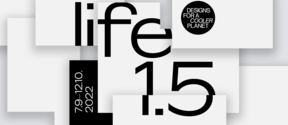Kaikkea muuta kuin tavallinen kasvihuone
Umpinainen puurakenteinen kasvihuone vie puolet vähemmän energiaa kuin lasinen. Ruoantuotannon lisäksi Pasi Herrasen keksintö voi tulevaisuudessa tuottaa sähköä ja ylimääräistä lämpöä.


According to our vision, the vertical farming industry has great potential significantly change plant cultivation practices and sustainability of food production. Vertical farming can produce fresh food with minimised CO2 emissions: These facilities could be constructed mainly from wood, and only renewable electricity could be consumed in the cultivation process. In addition, vertical farming would reduce the need for transport of products to consumers close to zero miles, and cultivated products could have even longer shelf life, resulting in less food waste.
In such systems, irrigation water could be recycled close to 100%, so the only water escaping the facility would be the amount of water stored inside the cultivated plants. Concomitantly, fertilisers can be recycled, thus preventing nutrients runoff to oceans. The irrigation system enables vertical farming operations to thrive even in extremely dry and hot areas wherein other plant cultivation practices are not applicable. This means more options to expand our food production system and can also offer possibilities to reforestation of land areas reserved for open field cultivation.
Large-scale industrial vertical farms could be integrated to the infrastructure of smart cities, and besides hyper-local and super-clean food production, these farms could produce thermal energy into the district heating networks and balance the electrical grid. Multiple, different plants could be produced in a profitable way, including such protein-rich plants as broad beans.
While the vertical farming industry is growing into one of the major plant production methods, the total land area of forests is increasing (fields are again converted back to forests). At the same time, we need fewer fertilisers and pesticides than open field farming, which will have a direct impact on biodiversity loss and eutrophication of the seas
Niko Kivioja, CEO, Netled Oy
Panu Miettinen (Aalto University) and Titta Kotilainen (Natural Resources Institute of Finland, Luke) are leading the panel discussion.

This project springs from the R2B project (funded mainly by Business Finland) called VIS at the Department of Bioproducts and Biosystems in the School of Chemical Engineering at Aalto. VIS has continued as a research project that is part of project called TREFORM funded by the Academy of Finland in a collaboration between Aalto University and Natural Resources Institute of Finland.
Pasi Herranen, Doctoral candidate, Department of Bioproducts and Biosystems
Panu Miettinen, Commercializing expert, Department of Bioproducts and Biosystems
Vahid Arabzadeh, Postdoctoral researcher (Energy Systems of Vertical farming)
Lauri Rautkari, Professor of Wood Material Science
Matti Kummu, Professor of Global Water and Food Issues
Alp Karakoc, Research Fellow, Department of Communications and Networking
Titta Kotilainen, Senior Scientist, Natural Resources Institute of Finland

Umpinainen puurakenteinen kasvihuone vie puolet vähemmän energiaa kuin lasinen. Ruoantuotannon lisäksi Pasi Herrasen keksintö voi tulevaisuudessa tuottaa sähköä ja ylimääräistä lämpöä.

A wooden greenhouse with no windows or separate heat source consumes significantly less energy and water than conventional alternatives, declares a project team at Aalto University.
Bio2: johtavaa osaamista puunjalostusteknologiassa ja bioteknologian huippua

Edistämme tutkimuksen ja opetuksen keinoin kestävää omaisuuden hallintaa, tehokasta vesi- ja jätehuoltoa, riittäviä vesivaroja, sujuvia ja turvallisia liikenneyhteyksiä sekä toimivia paikkatietoratkaisuja.

Tietoa Kemian tekniikan korkeakoulun johtamisesta, päätöksenteon prosesseista ja niihin liittyvistä hallinnollisista elimistä.

Tietoa päätöksenteosta Insinööritieteiden korkeakoulussa.


Designs for a Cooler Planet on viiden viikon mittainen festivaali, joka on yhtä planeettaystävällisten materiaalien, muodin ja ruoan juhlaa.

Vastuullisempia vaihtoehtoja liittyen ruokaan, ravintoketjuihin ja pakkauksiin.